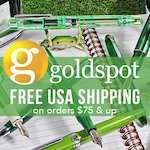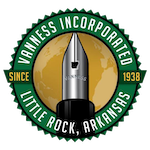The Pilot Hi-Tec-C is a pen that changed how many people think about pens. Artists and designers love the micro-tip sizes - all the way down to .25 mm - plus the needle tip which allows for good sight lines and ruler usage. It also changed the Kickstarter pen market, becoming the go-to refill when pens on Kickstarter first became a thing.
As famous as this pen is, it isn’t a good pen for many people. Over the years, the best word I have found to describe it is finicky. If you are willing to put up with some dry starts until the pen gets flowing, you will find one of the best pens on the market, especially for small writing or detailed artwork. If the output is not worth the initial frustration - and it does get very frustrating at times - you will swear this pen off for a lifetime, like many rightfully have.
The 0.3 mm black Pilot Hi-Tec-C is a personal favorite of mine, and the one I get the best and most consistent performance from. I love what my writing looks like with it, and it is a great sketching pen too. I always have one with me in either the basic grip barrel or in my Pen Type-B barrel.
Recently, Pilot has expanded their G-Tec-C lineup, which is the name of this line of pens outside of Japan, to offer more than the black, blue, red, green, and purple that formerly made up the G-Tec-C group. Navy and Turquoise are the two I chose to review because these ink colors have not been offered by this name in the original Hi-Tec-C lineup as best as I can remember.
I am very familiar with Pilot Hi-Tec-C Blue Black and Clear Blue, which I was guessing these two new colors would match, but they are different shades. Navy is much lighter than the Blue Black refill I have, while Turquoise is close to Clear Blue but ever so slightly darker.
The Navy 0.4 mm model wrote wonderfully throughout the entire review, through all of the stops and starts. The Turquoise model not so much. You can see how light the ink is at the start of some of the Turquoise lines, which is typical bad G-Tec-C performance. This is why I almost never recommend this pen without a pile of caveats.
That doesn’t stop me though. I’m stubborn, and the output gives me a line that no other gel ink pen can match. Maybe you will like it too, and hopefully these new G-Tec-C colors are around to stay for a while.
(JetPens provided this product at no charge to The Pen Addict for review purposes.)
Enjoy reading The Pen Addict? Then consider becoming a member to receive additional weekly content, giveaways, and discounts in The Pen Addict shop. Plus, you support me and the site directly, which I am very grateful for.
Membership starts at just $5/month, with a discounted annual option available. To find out more about membership click here and join us!













































